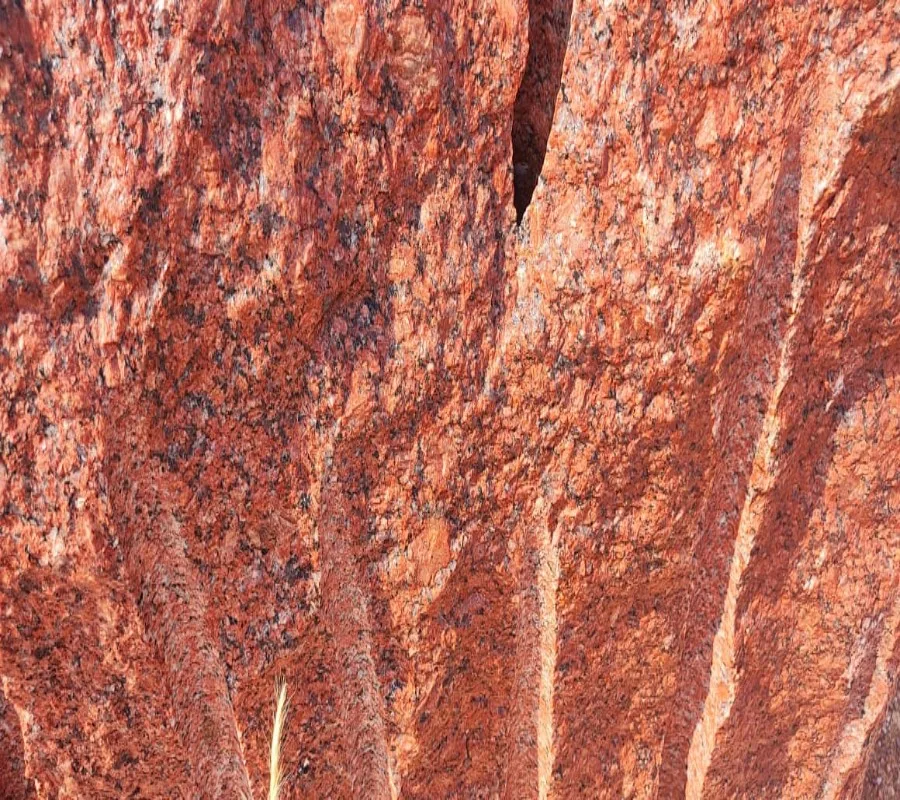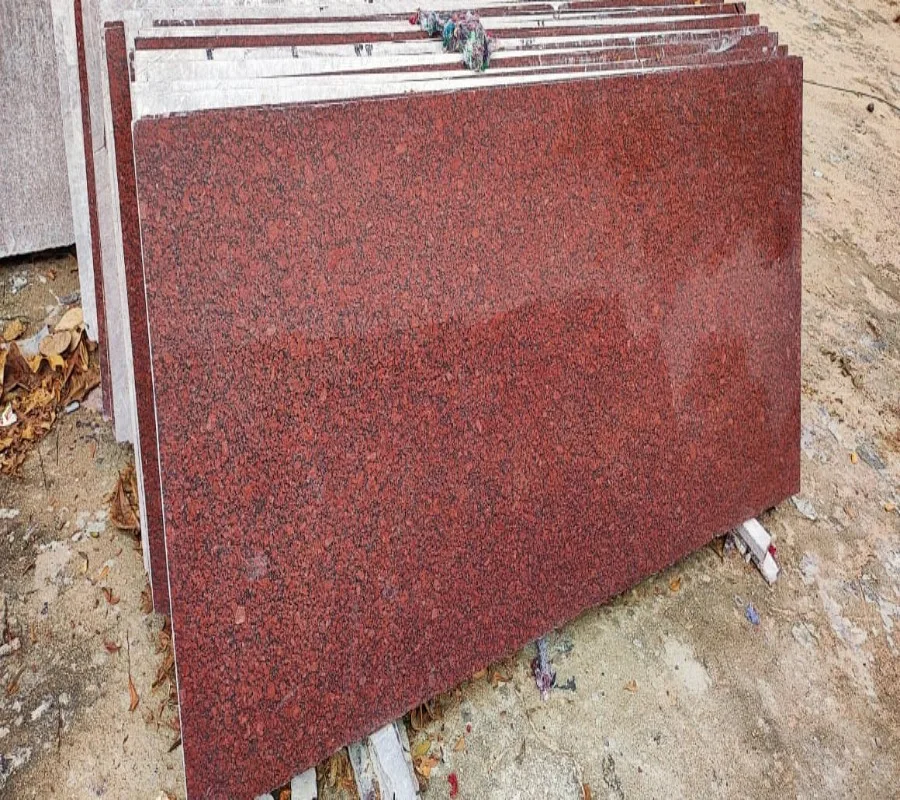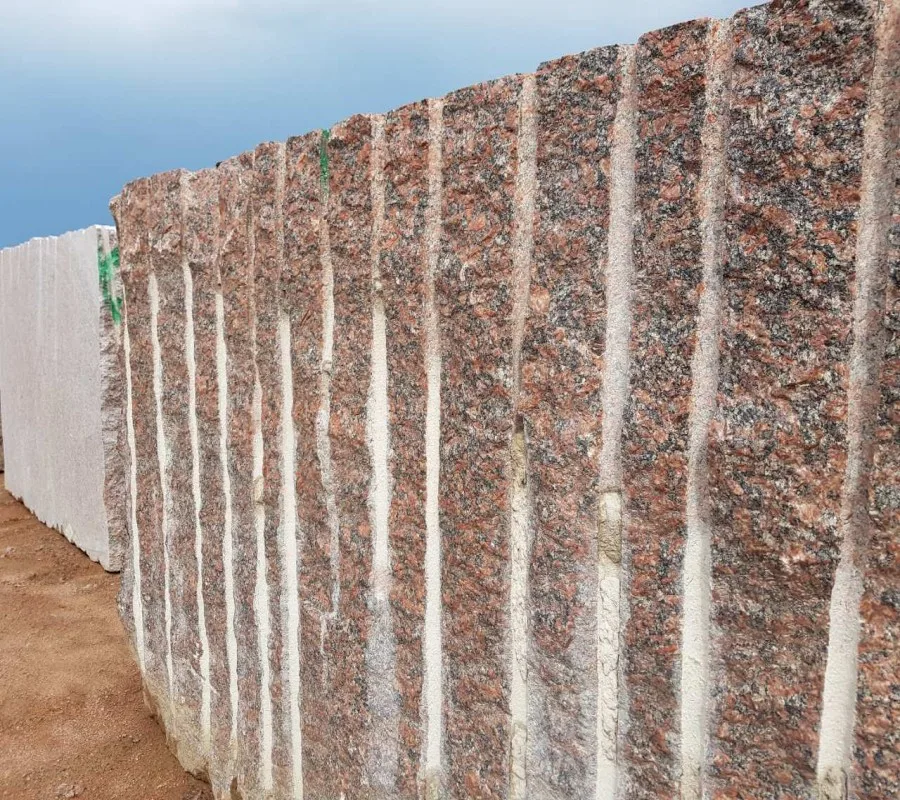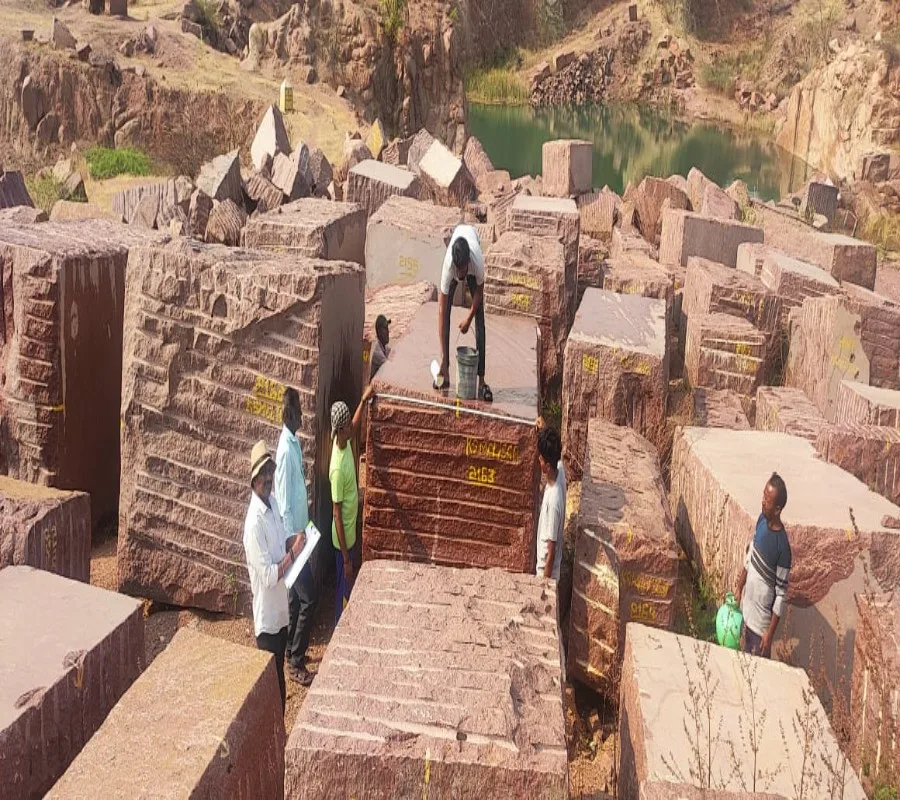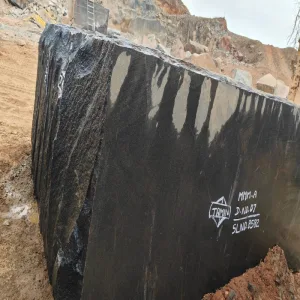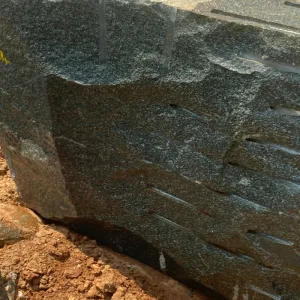Imperial Red Rough Granite Blocks serve as raw material for monument makers, tombstone fabricators, large-scale building cladding contractors, and sculptors. Rough blocks arrive directly from the quarry with minimal surface preparation, making them cost-effective for buyers who will cut, polish, or texture the stone on-site. Common applications include exterior wall cladding for commercial buildings, memorial monuments, countertops (after processing), paving stones, and decorative landscaping features. The red coloration provides visual warmth and contrasts well with lighter building materials.
Performance and Quality Detail
Granite’s igneous origin gives Imperial Red blocks high compressive strength—typically between 130 and 250 MPa—allowing them to support significant loads in structural and semi-structural roles. The low water absorption rate (<0.4%) reduces freeze-thaw damage risk, making these blocks suitable for outdoor installations in cold climates. The rough surface requires secondary processing (sawing, flaming, honing, or polishing) to achieve desired finishes. Natural color variation occurs due to feldspar and quartz concentrations; buyers should request samples to assess color consistency across a shipment.
Materials and Manufacturing Notes
Imperial Red granite forms from slow-cooling magma, producing interlocking crystals of feldspar, quartz, and mica. Quarrying involves diamond-wire sawing or controlled blasting to extract large blocks while minimizing fractures. Blocks are then transported unfinished to reduce shipping weight and costs. Secondary fabricators handle cutting, edge profiling, and surface treatments based on project specifications.
| Color | Rich Deep Red with Black & White Mineral Speckles |
| Origin | South India |
| Texture | High-density, compact, fine-grain structure |
| Size | 180up*60up, 200up*100up, 200up*120up, 260up*160up |
| Density | Approximately 2,750 – 2,850 kg/m³ |
Alternative Names for Imperial Red Rough Granite Blocks:- Imperial Red Granite Blocks, Red Rough Granite Blocks, Indian Imperial Red Granite Blocks, Natural Red Granite Rough Blocks, Deep Red Granite Blocks, Red Granite Rough Blocks
Maintenance and Care
Unfinished rough blocks require no maintenance during storage but should be kept dry to prevent surface staining from iron oxide leaching. Once installed and finished, granite surfaces need sealing every 1–3 years (depending on porosity and exposure) with a penetrating silicone-based sealer. Clean with pH-neutral stone soap; avoid acidic or abrasive cleaners that can etch or dull polished surfaces. Properly maintained granite installations can last 50+ years outdoors.
Installation and Compatibility Notes
Installation requires stone fabrication equipment (diamond saws, CNC routers for precision cutting) and skilled masons or stone installers. Rough blocks must be cut to final dimensions before installation. Anchoring systems for cladding must comply with local building codes; stainless steel anchors prevent rust staining.[7] Granite’s weight (approximately 2,700 kg/m³) requires structural support calculations for vertical installations.
PROS & CONS
Pros:
- Exceptional compressive strength (130–250 MPa) suitable for load-bearing and structural applications
- Low water absorption (<0.4%) minimizes freeze-thaw damage and staining
- Distinctive red coloration with natural veining creates unique aesthetic appeal
- Long service life (50+ years) with minimal maintenance when properly sealed
Cons:
- Requires specialized cutting and fabrication equipment, increasing processing costs
- Heavy material (2,700 kg/m³) demands structural support analysis and robust installation hardware
- Natural color variation between blocks may require on-site matching and selection
WHO SHOULD BUY / WHO SHOULD NOT BUY
Ideal Buyers:
- Monument and memorial fabricators seeking durable, aesthetically distinctive stone
- Commercial builders specifying exterior cladding with long-term performance
- Landscapers designing high-end outdoor features (stone walls, water features)
- Fabricators with in-house cutting/polishing capacity
Not Recommended For:
- DIY homeowners without stone fabrication tools or experience
- Projects with strict color-matching requirements (natural variation is inherent)
- Budget-constrained projects where engineered stone or concrete alternatives suffice
FAQs
Q1: What dimensions are Imperial Red Rough Granite Blocks available in?
Rough blocks vary by quarry; typical dimensions range from 180–300 cm length and 150–200 cm height. Custom sizes may be negotiated with suppliers but require longer lead times.
Q2: Can these blocks be used for kitchen countertops?
Yes, after fabrication (cutting, edge profiling, polishing). Rough blocks must be processed by a stone fabricator to achieve countertop specifications.
Q3: How do I prevent rust staining on installed granite?
Use stainless steel anchors and fasteners. Galvanized or carbon steel hardware can cause rust leaching onto the stone surface.
Q4: Is Imperial Red granite suitable for outdoor use in freezing climates?
Yes. The low water absorption rate (<0.4%) provides excellent freeze-thaw resistance, meeting ASTM C615 requirements for exterior applications.
Q5: What is the typical lifespan of installed Imperial Red granite?
With proper sealing and maintenance, granite installations commonly last 50+ years outdoors and indefinitely indoors.
Q6: Are there environmental certifications for granite quarrying?
Some quarries hold ISO 14001 (environmental management) or participate in sustainability audits. Request certifications from your supplier; not all quarries are certified.

